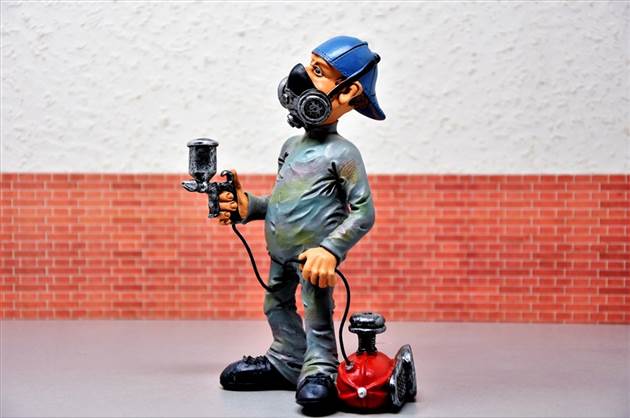Painter and Decorator – Branch 1, Residential & Commercial Trades Qualification and Apprenticeship Act
Voluntary Trade
Designated Red Seal Trade Trade Code 404C
NOC 7294
Description
- Read and interpret blueprints, specifications and other instructions to determine quantities of the materials required
- Prepare and clean surfaces using methods such as scraping, sanding, sand-blasting, hydro-blasting and steam-cleaning; remove old wallpaper and loose paint; repair cracks and holes in walls, apply sealer
- Mix and thin paint to obtain desired colour and texture
- Apply paint or other materials, such as stains, lacquer, enamel, oil, varnish, fiberglass, metal coating or fire retardant using brushes, rollers or spray equipment
- Measure, cut and apply wallpaper or fabric to walls
- Assemble and erect scaffolding and swing gates
- Advise customer on selection of colour schemes and choice of wall coverings
- Be able to prepare surfaces in industrial applications
- Provide cost estimates to clients
Personal Qualities
- You are comfortable working on ladders much of the time
- You may be required to work in cramped areas or at considerable heights
- You may work outside at various times of the year and experience a considerable range of environmental conditions
- You can work bending down, stretching from side to side and often with your arms over your head
- You have the stamina to be on your feet for long periods of time
- You work with attention to detail
- You are in good physical condition
- Review the Essential Skills profile for additional qualities required http://www.hrsdc.gc.ca/eng/workplaceskills/essential_skills/general/home.shtml
Career Opportunities
- Journeypersons work for small, medium and large companies in the residential, industrial, commercial and institutional sectors or indirectly for those companies through contractors
- Many painters own their own business
- Painters work in union and non-union environments
Educational/Training Requirements
- The minimum entry for apprenticeship is Grade 10; however, Grade 12 is recommended with courses in Visual Arts, Mathematics and Entrepreneurship
- Several colleges offer two year co-op programs in Interior Decorating, continuing education (certificate) programs which may be beneficial
- Completion of a 3 year apprenticeship program at 2,000 hours per year is required
- If you have completed 6,000 hours of on the job experience/training but have not completed the apprenticeship program you may be eligible to challenge the Certificate of Qualification
Training Availability
Trade Related Programs
Humber College – North Campus
Etobicoke ON www.humber.ca
Apprenticeship Training
Ontario Industrial & Finishing Skills Centre
130 Toro Road
Toronto ON M3J 3M9
416-635-7300 www.oifsc.com/
Potential Earnings
- Apprentices will be paid at least the Employment Standards Act (ESA) with wages increasing from 30% to 60% of that of a journeyperson
- Wages 1 range from $12 – $14 for junior apprentices and $25 – $30 for journeypeople, excluding overtime
Prospects For Employment
- Ratio journeyperson/apprentice is 1:1, 2:2, 3:2,4:2 or 5:3
- Employment 1 is expected to be balanced until 2018
- Employment opportunities are linked to the economy
Financial Incentives
- Employers who employ first, second and third year apprentices can apply for the Apprenticeship Training Tax Credit
- Employers who employ first and second year apprentices can apply for the Apprenticeship Job Creation Tax Credit
- Apprentices are able to apply for the Apprenticeship Incentive Grant
- Apprentices may also be able to apply for the Tradesperson’s Tools Tax Deduction
- Apprentices who complete their apprenticeship and earn their Certificate of Qualification are eligible for the Apprenticeship Completion Grant


